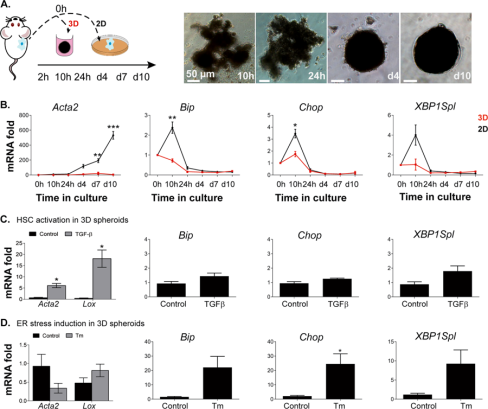
Cell Death Dis. 2019 Feb 4;10(2):98. doi: 10.1038/s41419-019-1327-5.
Open access
Abstract
Hepatic stellate cells activate upon liver injury and help at restoring damaged tissue by producing extracellular matrix proteins. A drastic increase in matrix proteins results in liver fibrosis and we hypothesize that this sudden increase leads to accumulation of proteins in the endoplasmic reticulum and its compensatory mechanism, the unfolded protein response. We indeed observe a very early, but transient induction of unfolded protein response genes during activation of primary mouse hepatic stellate cells in vitro and in vivo, prior to induction of classical stellate cell activation genes. This unfolded protein response does not seem sufficient to drive stellate cell activation on its own, as chemical induction of endoplasmic reticulum stress with tunicamycin in 3D cultured, quiescent stellate cells is not able to induce stellate cell activation. Inhibition of Jnk is important for the transduction of the unfolded protein response. Stellate cells isolated from Jnk knockout mice do not activate as much as their wild-type counterparts and do not have an induced expression of unfolded protein response genes. A timely termination of the unfolded protein response is essential to prevent endoplasmic reticulum stress-related apoptosis. A pathway known to be involved in this termination is the non-sense-mediated decay pathway. Non-sense-mediated decay inhibitors influence the unfolded protein response at early time points during stellate cell activation. Our data suggest that UPR in HSCs is differentially regulated between acute and chronic stages of the activation process. In conclusion, our data demonstrates that the unfolded protein response is a JNK1-dependent early event during hepatic stellate cell activation, which is counteracted by non-sense-mediated decay and is not sufficient to drive the stellate cell activation process. Therapeutic strategies based on UPR or NMD modulation might interfere with fibrosis, but will remain challenging because of the feedback mechanisms between the stress pathways.
